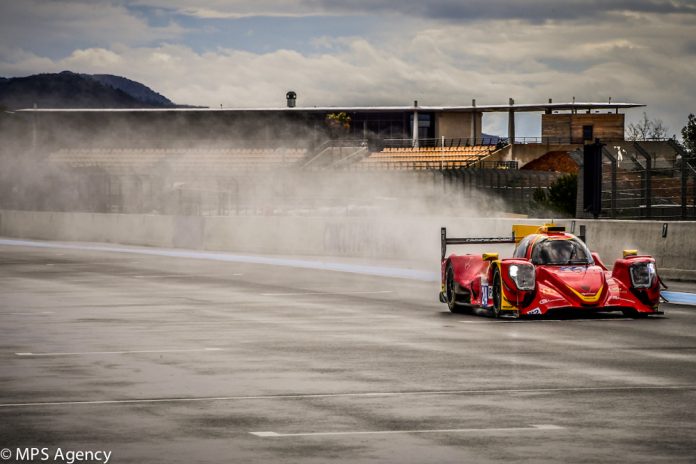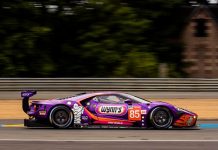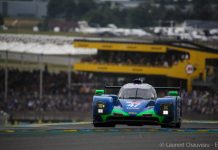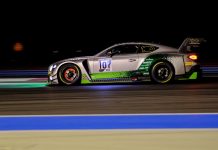
For the last seventeen years Racing Engineering has been competing in single-seater racing with great success, between 2001 and 2006 they won the Spanish Formula 3 Team Championship six times and the Drivers’ Championship three times, 2002 saw them winning the World Series by Nissan Team Championship and in 2008 and 2013 they took the GP2 Drivers’ Championship. However, in 2018 the Spanish team are returning to their Endurance Racing roots when they compete in the European Le Mans Series with their all-French driving team of Norman Nato, Olivier Pla and Paul Petit.
Below Racing Engineering’s Technical Director, Alan Queille discusses the difference between the worlds of F2 and Endurance Racing and how the team has been preparing for its debut in the European Le Mans Series.
Racing Engineering have made the switch from the FIA Formula 2 Championship to the European Le Mans Series this winter. What does this mean technically, what are the main differences considering the two kinds of cars?
Apart from the obvious differences like wheel arches, roof, doors, an F2 and an LMP2 are relatively close in terms of architecture. They are two cars with a lot of aero, a carbon monocoque, a double wishbone suspension with pushrods at each corner. The powertrain is also similar to what we used in F2 with a 6-gear sequential gearbox with a paddle shift and a V8 engine. Even though the LMP2 is heavier and less powerful, the corner grip is quite high. The LMP2 is far more complex in terms of electronics. The teams and drivers have more tools to play with before and during the session: Traction Control System, Electric Power Steering, and more engine and gearbox maps. We have real-time telemetry now, allowing us a live visualisation of the car sensors (reliability, performance).
Further than the car, where are the principle differences, but also challenges when it comes to running an LMP2 car in the Le Mans Series?
Basically, the main challenges and differences are coming from the basics of an endurance race: longer races and several drivers sharing a car. The longer race duration (four hours against one in F2) means that more can happen (weather changes, safety car, etc). We have more parameters to take into account for the race strategy: race duration, refuelling, number of tyres, driving time for each driver according to his category (each driver has a different minimum and maximum driving time during the race). Even if still vital, the qualifying sessions have less importance than in F2. We will also have to adjust our strategy throughout the race in order to adapt to changing circumstances, while in F2, once the tyre change was done, we rarely had to pit again. While with the F2, we were able to fully adjust the car to its driver, we have to learn how to work with three drivers using the same car, thus finding a balance suiting well the three, give track time to each of them, etc. The challenges come also from the different calendar structure. In the FIA Formula 2 Championship we had between 10 and 12 events per season (with 2 races per weekend). In the European Le Mans Series we have 6 events with one 4h race per weekend.
Entering a new championship is always a challenge, so how does the team prepare the new season ahead?
The first steps to prepare for this challenge is to define the needs of the team in terms of organisation, material and parts to be sure to have everything ready at the first race. Then, we entered into a more concerted phase from when we received the car. The mechanics started working on it to learn the maintenance operation, setup adjustment. On the engineering side, we entered the car parameters in our simulation software and driver simulator model and studied last years’ events. We obviously practiced the new kind of pit stop with complete different rules to that we were used to. After a first shakedown, we had a test day recently with the three drivers. It allowed us to start working with the car on-track, learning its sensitivity to setup-adjustments, car balance etc. We are now finalizing all our preparations to be ready for the first official event in Paul Ricard.
Racing Engineering actually started in endurance racing back in the 90s and now, back to its roots, what are the expectations for the first season in ELMS?
We are very happy to be part of the European Le Mans Series. The LMP2 entry list is quite impressive with nearly 20 cars run by very experienced teams with good driver line-ups. As a first year for us in a new category with a new car, it will obviously be a very steep learning curve. We first have to be sure we maximise every aspect of a race weekend (car setup, strategy, pitstop) before looking towards scoring good results. The first step in this direction will be two productive days of testing during the official test at Paul Ricard before entering into our first race.








